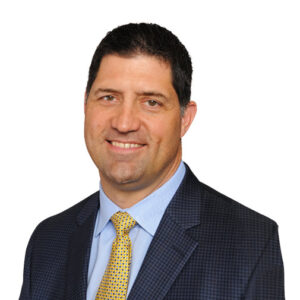Joint Replacement Surgery: State-of-the-Art Solutions and Personalized Treatment Plans
Table of Contents
Meet Your Joint Replacement Specialists
The distinguished team of board-certified joint replacement surgeons at South Bend Orthopaedics stands ready to provide exceptional care. Renowned for their expertise and precision, these specialists are dedicated to transforming the lives of patients suffering from joint conditions. With a commitment to excellence, South Bend Orthopaedics’ joint replacement surgeons offer cutting-edge solutions and personalized treatment plans, ensuring optimal outcomes and enhanced quality of life for those seeking relief from joint-related challenges.
Joint replacement begins at South Bend Orthopedic. Schedule a consultation with one of our joint replacement specialists online or by calling 574-247-9441 today.
Joint Replacement Conditions: Our Treatments and Approach to Care
Conditions We Treat
Surgery Treatments
Other Treatments
Conditions We Treat
Hip Replacement
Hip replacement surgery is a common orthopedic procedure designed to alleviate pain and improve the functionality of the hip joint, typically caused by conditions like osteoarthritis, rheumatoid arthritis, or hip fractures.
-
Total Hip Replacement
Chronic condition characterized by inflammation and degeneration of the joints.
-
Minimally Invasive Total Hip Replacement
Common condition caused by compression of the median nerve as it passes through the carpal tunnel.
-
Hip Hemiarthroplasty
Condition of the wrist and thumb caused by irritation or inflammation of the tendons at the base of the thumb.
-
Revision Hip Replacement
Complex surgical procedure in which all or part of a previously implanted hip joint is replaced with a new artificial hip joint.
-
Direct Superior Total Hip Replacement
The most advanced form of hip replacement surgery, performed through a single small incision using state-of-the-art technology.
Knee Replacement
Shoulder Replacement
Shoulder replacement surgery is designed to address pain, limited range of motion, and functional impairment in the shoulder joint caused by various conditions, including osteoarthritis, rheumatoid arthritis, rotator cuff tears, or severe fractures.
Other Joint Replacements
In addition to the more common joint replacement surgeries like those for the hips, knees, and shoulders, there are also various other procedures that address issues in smaller joints throughout the body. These include procedures for ankle, elbow, wrist, and finger joints.
Surgery Treatments
Advanced Surgical Techniques
In the rapidly evolving field of orthopedic surgery, staying up-to-date with the latest technology and techniques is crucial. We invest in state-of-the-art equipment and surgical tools to ensure the highest level of precision and safety during joint replacement procedures. Advanced imaging techniques, such as 3D CT scans and MRI, help us create detailed preoperative plans, allowing for more accurate implant placement. Additionally, computer-assisted navigation systems are used to enhance the precision of surgery, resulting in better outcomes and reduced recovery times.
Other Treatments
Learn more about additional treatment options for joint replacement conditions as well as our approach to care.
Customized Treatment Plans
At the heart of our approach is our commitment to putting patients first. We recognize that every patient is unique, and their needs and concerns vary. Therefore, we begin the joint replacement journey by thoroughly evaluating each patient’s medical history, lifestyle, and expectations. This personalized approach allows us to tailor the surgical plan to meet your specific needs and goals.
Comprehensive Preoperative Evaluation
Before any surgery, our patients undergo a comprehensive evaluation. In knee replacement cases, this includes analyzing factors like ligament stability and knee alignment to determine the most suitable prosthesis. For shoulder replacements, we assess rotator cuff integrity and bone quality to customize the surgical approach.
Experienced Joint Replacement Team
Our team of orthopedic surgeons is renowned for their expertise and experience in joint replacement surgery. They have collectively performed thousands of successful procedures, making them leaders in the field. Their commitment to continuous learning ensures that they are well-versed in the latest surgical techniques and innovations. SBO’s surgical teams work collaboratively with anesthesiologists, nurses, and physical therapists to provide comprehensive care from the moment you enter our facility until your full recovery is achieved.
Comprehensive Rehabilitation and Post-Operative Care
We understand that the success of a joint replacement procedure goes beyond the operating room. SBO’s skilled physical therapists will guide you through a personalized rehabilitation program designed to optimize your recovery and mobility. Throughout your rehabilitation, our team will closely monitor your progress, making necessary adjustments to your treatment plan to ensure a successful and comfortable recovery.
Continuous Support
Your journey with us doesn’t end with the surgery. We are committed to providing ongoing support to help you regain your active lifestyle. Our team will schedule regular follow-up appointments to track your progress, address any concerns, and provide guidance on maintaining joint health. We also offer resources and educational materials to help you make informed choices about lifestyle changes, exercise, and nutrition that can contribute to your long-term joint health.
At South Bend Orthopaedics, our approach to joint replacement surgery is centered on you, the patient. We combine personalized care, advanced technology, experienced professionals, comprehensive rehabilitation, and continuous support to ensure that you receive the highest standard of care throughout your joint replacement journey. Schedule a consultation with one of our joint replacement specialists online or by calling 574-247-9441 today.








